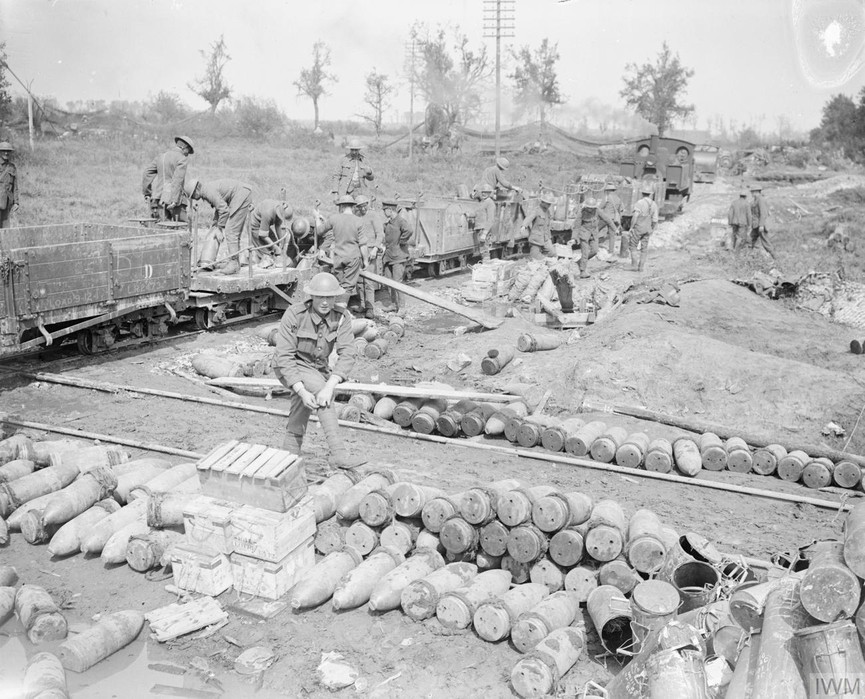Charles John Bloomfield was born on 6th July 1896 in Aldringham, Suffolk. At the start of the war, he was living in Stowmarket and working for the Great Eastern Railway as a porter. He enlisted on 20th November 1915, in Ipswich, and was put into the Army Reserve. Over a year later, on 18th December 1916, Charles was called up and sent to Longmoor Camp in Hampshire to join the No.2 Light Railway Operating Company as a shunter. The company was then posted to France on 4th February 1917 and spent the war based in the Ypres Salient.
Charles Bloomfield served with a Light Railway Operating Company where he worked as a shunter.
(IWM Q5855)
The Light Railway Operating Companies (LROC) were set up when it was realised that the maintenance of roads was becoming a significant problem: both the workforce and the vast quantities of road stone required to repair structural damage were blocking the very roads they were trying to repair. This in turn, obstructed the movement of men and equipment to and from the front line. The first light railway employed by the British forces was based on the French system, with a track gauge of 60cm (2 feet). The Royal Engineer’s approach was to prefabricate sections of track that were lightweight and could be laid with little or no ground preparation. The track could also be easily replaced if and when damaged by enemy shellfire. The light railways were used not only for getting men and supplies to the front line (for instance it was reported that a single light railway moved fifteen hundred tonnes tons of ammunition in one night) but to transport the wounded back behind the lines to hospital care.
After the Armistice had been declared, Charles remained with the No 2 LROC and was promoted to a block-man, responsible for controlling the movement of the trains along the tracks by passing tokens to the drivers that authorised them to proceed. He was demobilised two years to the day that he first arrived in France, on 4th February 1919.
Charles returned to Melton and, in 1926 married Elbeena Daines, the daughter of William Daines, a basket-maker. He remained employed by the Great Eastern Railway and, in 1939, Charles and his wife were living at Meadowside in Melton and he was still employed as a railway porter. Charles was living at Meadowside when he died in 1964.
For his war service, Charles received the British War and Victory Medals.
